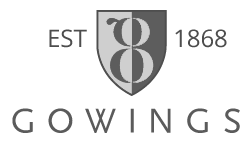News and Announcements

Stop Your Baby From Crying Before it Starts by Understanding Your Baby’s Secret Language
- Published March 10, 2020 12:00AM UTC
- Publisher Wholesale Investor
- Categories Company Updates
In 2006, a uniquely talented Australian woman by the name of Priscilla Dunstan discovered that certain phonetic sounds produced by infants all have specific meanings.
Eight years of research proves that this Secret Baby Language is simply the baby’s way of telling us what he or she wants. And, what they want is based on only 5 of the most common physical needs of all newborns and infants.
Priscilla, together with her partner George Betsis developed the world first sound identification system and education program to teach parents this Secret Baby Language so they could understand these different sounds and respond to their infant’s needs in a pre-emptive way not possible before.
Frequently Asked Questions from DBL
“Do newborn babies really use ‘language’?”
Babies use sound and gestures to communicate their basic needs. These sounds are not random – they have meaning. That is, their bodies in response to a physical need produce them. If these needs are not met or are ignored, cries usually become louder as the baby becomes more upset. The sooner parents LISTEN and identify the need then respond appropriately, the less baby will cry. These sounds or ‘words’ form the basis of the Baby Language. They have meaning and what parents and caregivers need to do, is very straightforward: just listen to their baby and then apply an appropriate settling technique.
“At what age does my baby begin to use the Baby Language?”
DBL Baby Language is suitable for all infants from birth to approximately 5-6 months of age. We encourage parents to first preview DBL while pregnant. This will give them a head start when learning to understand their baby’s cries, and therefore enjoy the benefits that this new understanding brings, from Day One.
“How do you know that Dunstan Baby Language is actually Universal?”
Our process of discovery has spanned over a decade of research, including observation of over 1,000 babies in seven countries with over 30 different nationalities of infants. Since 2006 independent studies have been conducted in the USA, Australia and the UK demonstrate that the DBL words are produced by babies regardless of ethnicity, nationality or mother-tongue. Recently, we received results and video footage from a university research study done by nurses in the Philippines demonstrating all five DBL sounds. What’s more, we receive correspondence daily (letters, email, Facebook) from happy parents from all over the world, and have yet to be made aware of instances where it does not apply.
“How is it that the sounds are the same for all babies?”
The sounds of Dunstan Baby Language are a language of the body, based on predictable, involuntary physical responses. A newborn’s body acts on these physical reflexes. DBL is based on the fact that when sound is added to different reflexes, distinct sounds are produced. Neonatal reflexes are universal, human phenomenon well documented by science.
The Neh sound is based on the sucking reflex which is stimulated by the body seeking nutrition. Owh is based on the yawn, indicating the body is ready for sleep. Involuntary reflex-like responses also create the Eh, Eairh and Heh sounds. Eh is made by the chest contracting to force the gas up and out. The Eairh sound comes from the tensing of the tummy and intestinal muscles when a baby has gas. Heh comes with the wriggling movement of the baby’s body as his skin responds to discomfort. Although skin, chest and intestinal muscle movements, even yawning, are not commonly called reflexes, like reflexes, they are spontaneous physical responses by a healthy baby.

About Dunstan Baby Technologies
There is a Universal language spoken by every baby around the world!
Every baby is born with the ability to express their basic needs through sound. Eight years of research has found that there is a common language shared by ALL by babies throughout the world. A simple language babies use to communicate their needs.In 2006, a uniquely talented Australian woman by the name of Priscilla Dunstan discovered that certain phonetic sounds produced by infants all have specific meanings.
Eight years of research proves that this Secret Baby Language is simply the baby’s way of of telling us what he or she wants. And, what they want is based on only 5 of the most common physical needs of all newborns and infants.
Company Updates
Backed By Leading Investment Groups and Family Offices







